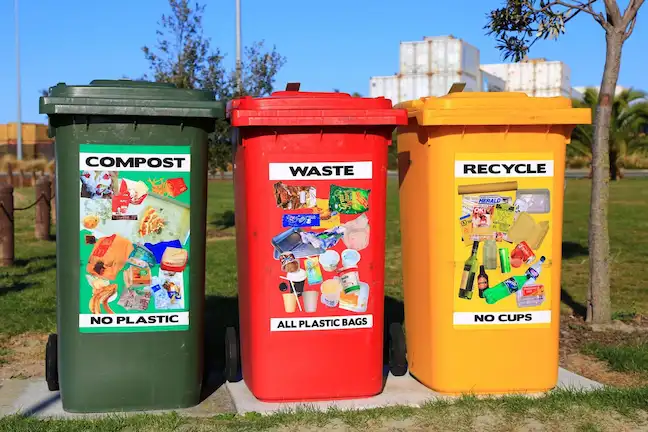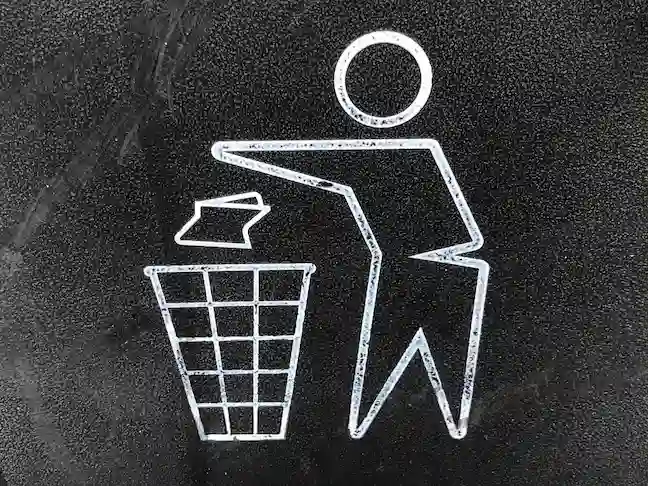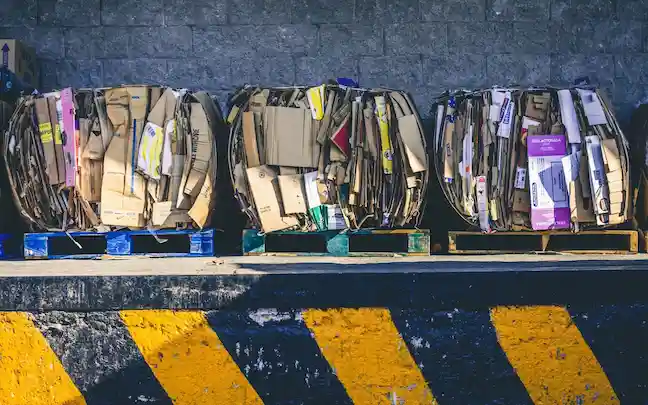Recently, policy advances have provided the opportunity to align waste management with greenhouse gas (GHG) emission reduction objectives, such as national goals to halve food waste and creating a circular economy decision making framework.
The Sydney Opera House has taken strides to reduce energy use and increase recycling efforts as part of a plan to become carbon neutral, offering businesses a prime example for how these changes should be implemented in their operations.
History of Waste Management in Sydney
Sydney has made remarkable strides over the last century when it comes to waste management, becoming one of the greenest cities worldwide thanks to residents’ commitment. They strive to maintain this status by emphasizing recycling and waste minimisation initiatives with some outstanding projects underway.
Prevention is at the core of waste management, which can be achieved by diverting organic waste away from landfill by composting food scraps or using biodegradable plastic takeaway food containers. The city has several recycling centres that aim to expand their capacities.
Waste water treatment is another key aspect of waste management. Prior to the late 1800s, Sydney’s sewage was discharged directly into its harbor causing health concerns and polluting beaches; as a result it was imperative for Sydney to establish sewerage treatment plants for sanitation services.
Sydney’s population continued to increase and more land was needed for homes and businesses, necessitating land reclamation to form new suburbs. Household and industrial waste was used to cover this reclaimed land which leached into streams and waterways contaminating them, leading to severe pollution issues leading to Bubonic Plague that claimed over 100 lives by 1901.
Incineration became the preferred waste disposal method during this era in Sydney. Residents dug cesspits in their yards to dispose of waste. Once covered by sand, this reduced the smell while breaking down waste faster and aiding its dissolution into smaller particles.
Unfortunately, however, this method also produced much soot and dust in the streets – leading to many pollutant issues for city authorities to manage.
Today, the city boasts over 25,000 km of wastewater pipes that operate to treat and dispose of its waste. Furthermore, they are exploring methods for turning its waste into power production – perhaps by turning it into methane gas that can then be used to generate electricity.
What Does Carbon Neutral Mean?
Environmental terminology can often seem overwhelming for everyday consumers. Yet when major corporations, states and even entire nations set lofty environmental goals like carbon neutrality or negative emissions goals, all should pay attention.
Although these terms may seem synonymous, there is a distinct distinction.
To be considered carbon neutral, an entity must strive to balance out both greenhouse gas emissions (often referred to as “carbon emissions”) that it releases into the environment with those removed via recycling efforts or by any other means. This means that when you hire carbon neutral waste removal, you are ensuring that the climate impact will be offset by other means. This is one way you can help contribute to a cleaner planet.
Attaining environmental sustainability requires both prevention and offsetting efforts. Some examples of ways we can lower emissions include using renewable energy sources, cutting back on air travel and adopting energy-saving practices in the home or workplace.
Carbon negative is a more specific term, and requires entities to take additional steps beyond carbon neutrality by actually taking steps in the opposite direction – through offsetting such as investing in reforestation projects or purchasing credits from companies who offset emissions elsewhere.
Carbon neutrality should be defined globally to stop human-caused environmental destruction, thus inspiring United Nations Conferences on Climate Change like Kyoto (1997 and 2001), Bonn (2008) and Paris (2015) to create legally-binding five-yearly carbon reduction targets for participants countries.
Incineration
The waste management industry is under mounting pressure to reduce greenhouse gas emissions. This pressure is compounded by landfills filling faster than they can decompose and the need to find new sites for waste disposal.
Alternative waste management technologies that produce energy from waste can offer an answer.
One such technology is incineration, which uses high-temperature combustion to transform solid waste into usable energy that can be used to generate electricity or heat. Waste incineration energy can also serve to replace traditional sources of fuel such as coal, oil and natural gas.
Since electricity and heat generated through waste incineration is considered renewable energy production, its contribution towards meeting EU targets for renewables should count towards their fulfillment.
There is an increasing trend for companies to offer carbon neutral waste management services, typically by investing in renewables such as wind or solar power, tree planting or biodiversity projects to offset emissions from operations.
Another way of becoming carbon neutral would be using waste reduction and recycling strategies that reduce how much waste must be incinerated or landfilled while altering characteristics of its waste stream fed into an incinerator.
The University of Sydney is taking an innovative approach to carbon neutrality by installing a HotRot biodigester. This device allows the University to manage organic waste on-site and produce compost on demand – processing up to 10 tonnes a week while emitting no unpleasant odours – with projected reduction of carbon emissions by 30%.
Biodigesters
Biodigesters provide an efficient alternative to throwing away food waste into landfills where it will produce greenhouse gases by recycling it into renewable energy sources.
These units feature an airtight container containing methanogenic bacteria which convert organic matter into fertilizer and biomethane gas production for use as a renewable energy source.
Biodigesters offer many advantages over conventional septic tanks. First and foremost, they require much less maintenance; more importantly, they produce both biogas and liquid fertilizer at once!
Furthermore, home biodigesters don’t need to be connected to any sewer system; instead they are installed directly into the ground – make sure that you read your instructions thoroughly to ensure everything runs smoothly!
Anaerobic digestion is used by biodigesters to convert organic materials into useful fuel and fertilizer, with any excess used as biogas as an alternative fuel source. This lowers GHG emissions while simultaneously helping individuals become more self-reliant.
Furthermore, biogas is significantly cheaper and cleaner than conventional fossil fuels. You can visit this site to learn more about biogas.
Biogas can be produced from many different sources, such as animal manure, plant material and human excrement. Most facilities specialize in extracting biogas from feedlot manure and grocery store food waste.
Transport of organic matter creates additional GHG emissions. Therefore, it’s vitally important to find an alternative source of organic matter; an ideal home biodigester unit consists of an airtight high-density polyethylene container filled with human and animal excreta mixed with water in which methanogenic bacteria ferment it into organic fertilizer that’s pathogen-free as well as a renewable natural gas.
When integrated with a septic tank this approach eliminates costly landfill disposal while improving water quality – perfect for green teams, business leaders, business owners or any leader concerned with sustainability initiatives!
Biomethane
Produced from organic material that washes down toilets, biomethane has an increased carbon footprint but offers customers lower-emission heating solutions similar to solar or electric heat sources.
At wastewater treatment plants across one service territory, biomethane produced from treatment is then blended back in with existing natural gas supplies as part of its suite of renewable gas initiatives.
Biomethane is an integral part of the circular economy, helping reduce greenhouse gas emissions while creating jobs and cutting waste disposal costs. Converting organic waste to methane has proven more cost-effective than using fossil fuels like coal, oil and gas for producing this renewable source of energy. Furthermore, using this fuel reduces disposal costs significantly while creating employment opportunities.
As we move toward a zero-carbon energy economy, biomethane will play a pivotal role in meeting our nation’s energy demands. It is an environmentally-friendly fuel that can be produced locally or injected directly into existing gas networks; eventually this technology may enable widespread use.
Longer term, the combination of biomethane with solar and batteries could create a comprehensive renewable energy system. While still at an early stage, this technology holds great promise to create new jobs, boost economic growth and reduce climate change emissions.
Consumers who wish to reduce their carbon footprint may find biomethane an affordable choice while industries difficult to electrify (mineral extraction or heavy manufacturing industries for instance) may find biomethane an efficient and cost-effective transition towards low carbon economies; its implementation should therefore form part of any country’s energy strategy.
Why Are Environmental Efforts Important?
Supporting environmental efforts has many tangible ecological, social and economic advantages. You can click the link: https://www.nrdc.org/stories/global-warming-101 to learn more about global warming.
Reforestation can reduce climate change by sequestering carbon dioxide in their wood, leaves and soil. Furthermore, trees play an essential role in protecting against erosion and flooding by absorbing excess water through transpiration.
Studies such as “Porter’s Innovation Hypothesis” demonstrate how properly designed environmental regulations may actually increase businesses’ profits through stimulating innovation and spurring creation of new products or opportunities.
Businesses providing pollution control services often find that stricter standards make them more cost-efficient when competing against similar services from competitors; those purchasing natural resource-based raw materials like water companies benefit as a result of higher standards lowering treatment costs.
People closest to nature tend to experience the negative consequences of environmental destruction most acutely, particularly indigenous communities and rural and coastal populations that rely on their local natural environment for survival.
When ecosystems are damaged through logging, mining, agriculture or development projects; indigenous communities lose land to development projects while fishing becomes reduced and food shortages arise as a result. This is one of the many reasons it is important to work towards a healthier climate overall.



